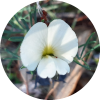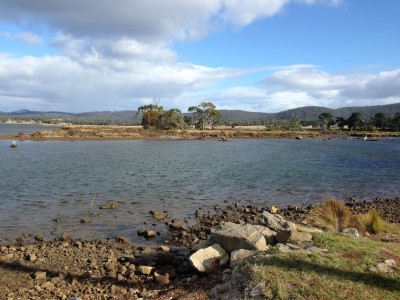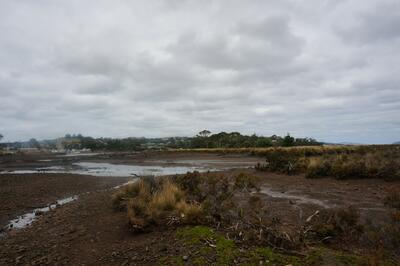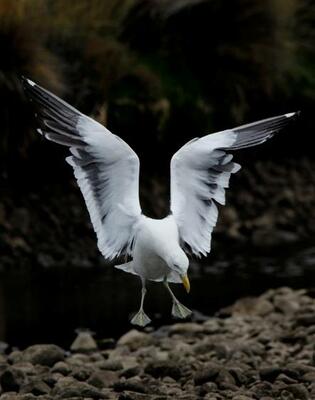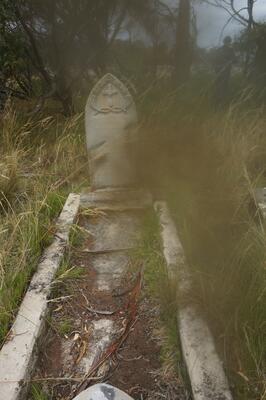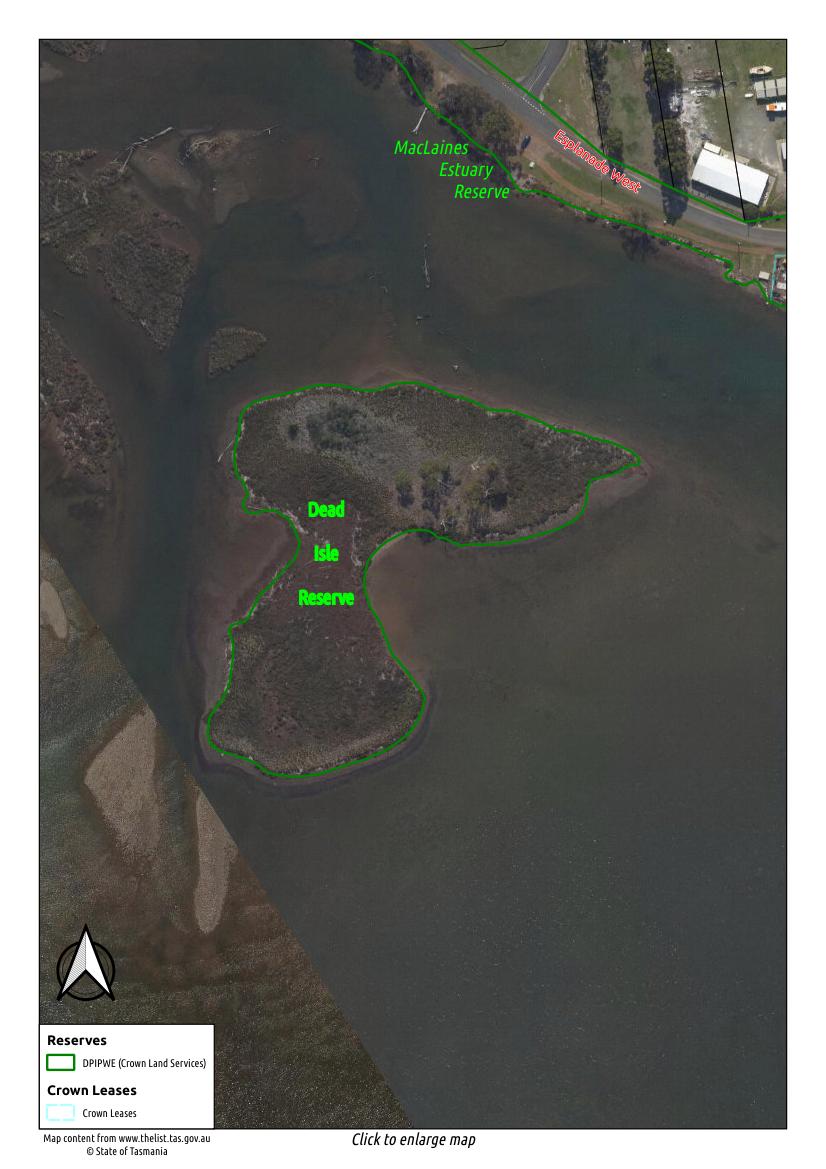Dead Isle Reserve
Reaching Dead Isle
by Rob Kelly, resident of Triabunna.
Dead Island lies next to the Triabunna township, and close to the Tasman Highway. It is part of the Dead Island Sanctuary dedicated to the protection of this habitat; the native vegetation, wildlife and coastal birds that frequent this area. The uniqueness of this location is enhanced by the fact it is surrounded by the Spring Bay waters and bordered on one side by Maclaines Estuary.
It is such a tidally affected area that the island only becomes accessible by foot when the tide is very low. On the Triabunna township side, myriad rocks of all shapes and sizes line the bed of the water and become exposed in all their muddiness and slipperiness as the water recedes. Old tree trunks that have been washed down from past flood waters rushing down the Maclaines Creek, become exposed in stark relief. They provide great roosts for the many pied cormorants that appear over the colder months.
If you walk around the Esplanade West point, facing out towards Maria Island, you come across the Triabunna Marina and Wharf. A completely different scene presents itself, a hub of boating activity and the ferry terminal for Maria Island. Like chalk and cheese, this once busy fishing fleet town now mainly taken over by luxury ocean going yachts moored in the marina and busy tourist cruise boats and ferries. Visitors flock here to catch the boats out to the islands and to get a meal at the popular Spring Bay Hotel on the corner. Many people still launch their own boats here to fish in the deep waters of Mercury Passage and further afield.
Back at the Dead Island Sanctuary, with its Pied Oyster Catchers picking amongst the rocks, Masked Lapwing’s patrolling the shores and Kelp Gulls soaring over the island, nature rules. Many native species of plants and grasses have survived in this Sanctuary and have even been slowly concealing Tasmania’s colonial past. Dead Island is the home to a number of graves from the period between 1847 and 1867. Some headstones can just be seen peering above the thick tussocks on the island as you walk along the Dead Island Track in Esplanade West.
Recently a great opportunity presented itself when a keen bird photographer, Murray Kelman, asked me if I would like to try and get over to Dead Island. As it happened, the tides were at their lowest and after several attempts to find the easiest access points without getting our shoes totally wet and bogged down in mud, we made it across to the island. As soon as we stepped onto its thick tussocky surface we felt like we had left civilisation behind. The tussocks swallowed us up as the Kelp Gulls circled around us, crying out loudly in protest at our invasion of their domain. We finally pushed our way to the Dead Island cemetery hidden under a grove of small trees. These old weather worn headstones, some still with legible inscriptions, are silent sentinels of the past and reveal some sad stories about the deceased. Triabunna has a long colonial history dating back to the very early days of British settlement and convict times in Tasmania. Dead Island is a very peaceful haven for these departed where little disturbance has occurred over the decades.
Looking back at the nearby shore, Triabunna seemed a long way off with its traffic, active daily pursuits and the comforts of home. Dead Island is a sanctuary for the dead, but also very much for the wildlife that continues on relatively undisturbed. A true sanctuary, it was almost telling us to go away, a reality that could not be ignored too long with the rising tide.
